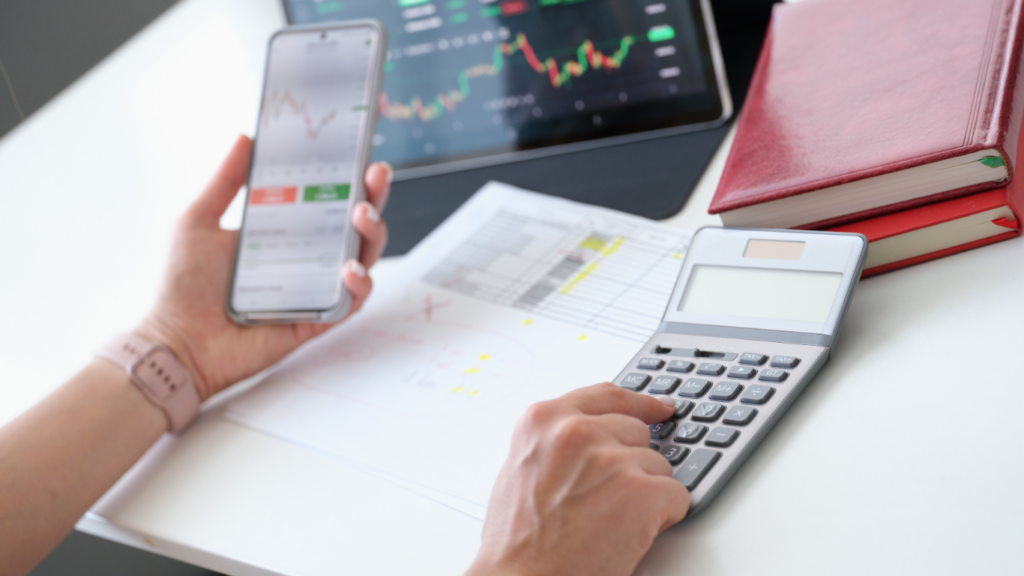
Renowned investor Warren Buffett, ranked as the fourth wealthiest person globally, boasts a net worth of approximately $120 billion.
His strategic prowess lies in his distinctive position sizing approach, emphasising concentration within a margin of safety.
Unlike conventional diversification, Buffett’s strategy involves substantial investments in a select few stocks with robust fundamentals—a testament to his confidence in their quality.
While this approach thrives in stable markets, the dynamics shift when engaging in faster-moving arenas like day trading or currency trading. For investors navigating these volatile markets, the question becomes: What position sizing strategy best aligns with the rapid pace and unpredictability of dynamic trading?
In this article, we’ll unravel the intricacies of position sizing tailored for such scenarios, offering practical insights to empower traders in the dynamic world of Forex.

Think of position sizing as deciding how much of your money to put into a single trade. It’s like choosing the right portion size for your meal – not too much that it overwhelms you, but enough to satisfy your appetite. In trading, it’s about finding the sweet spot that balances making gains and avoiding big losses, all based on your comfort level with risk.
Now, let’s clear up a common mix-up between position sizing and leverage. Position sizing is about determining how much of a particular asset you’re buying or selling, usually as a percentage of your total funds.
On the other hand, leverage involves borrowing money to increase the size of your trade. They’re related but different – it’s like deciding how much dessert (position sizing) you want, versus sharing it with a friend (leverage).
How position sizing shapes your strategy?
1. Risk Control: Position sizing helps you control how much you’re willing to risk on each trade. It’s like setting a limit on your spending to avoid blowing your budget.
2. Portfolio Management: Just like you diversify your meals for a balanced diet, position sizing lets you spread your money across different trades, reducing the impact of a bad outcome on your overall portfolio.
3. Psychological Impact: Imagine if your plate is too full – overwhelming, right? Well-sized positions relieve stress, helping you stay cool-headed and stick to your plan, avoiding impulsive decisions.
In a nutshell, understanding position sizing is like being a smart eater in the trading world. It’s about choosing your portions wisely, avoiding unnecessary risks, and making sure your overall trading strategy stays healthy and satisfying.

Understanding how to calculate the right position size involves a straightforward formula that considers two crucial factors:
Let’s delve into a real-world scenario to bring the position sizing formula to life. Suppose you have $1,000 as your trading capital, and you’ve decided to risk 2% of that on a single trade.
1. Risk per Trade Calculation: 2% of $1,000 is $20. This means you’re willing to risk $20 on this particular trade.
2. Stop-Loss Placement: With your $20 risk in mind, you set a stop-loss order at a level that, if reached, would result in a $20 loss.
3. Optimal Position Size Calculation: Now, considering the risk and your stop-loss, you can calculate the optimal position size. Let’s say your chosen currency pair has a pip value of $0.10. With a $20 risk and a $0.10 pip value, your optimal position size would be $20 / $0.10 = 200 pips.
This practical example demonstrates how the formula translates into actionable steps. By aligning your risk tolerance (2% of your capital) with a well-placed stop-loss, you can precisely determine the position size (200 pips) that ensures your trade aligns with your overall strategy.
Much like adjusting your shopping budget based on your available funds, adapting your position size to your account size is key. As your account balance fluctuates, so should your position size. This dynamic approach ensures that you’re not overcommitting when funds are limited or missing out on opportunities when your account size grows.

Forex trading requires a clear understanding of your individual comfort level with risk. Similar to gauging the thrill you seek during an adventurous activity, assessing your personal risk tolerance is about evaluating the financial excitement you can comfortably navigate without losing sleep at night.
It involves a thoughtful examination of your willingness to embrace risk, ensuring that your trading endeavours align with your financial and emotional well-being.
Once you’ve gauged your risk tolerance, the next step is to align your position size with it. Well-calibrated position sizes help you maintain composure, make rational decisions, and avoid emotional reactions to market fluctuations.
Exploring the dynamics of Forex trading requires implementing robust risk management strategies. Among these strategies, the 1-2% rule stands out as a widely acknowledged approach designed to safeguard your capital amidst market uncertainties. Understanding the 1-2% rule is fundamental for traders seeking stability in their financial endeavours.
Once introduced to the 1-2% rule, the logical next step is applying it to position sizing. Imagine it as incorporating safety protocols into your adventure gear – ensuring your equipment is in sync with the demands of your journey.
In Forex trading, aligning your position size with the 1-2% rule becomes a fundamental practice, allowing you to control risk while positioning yourself for potential growth.
Let’s put theory into practice with real-world examples to illustrate the impact of the 1-2% rule. Consider a scenario where your trading capital is $5,000. Following the rule, you’d limit your risk to 1-2%, translating to a risk of $50 to $100 per trade. These examples provide tangible insights into how the 1-2% rule can be applied, demonstrating its practicality in preserving capital and fostering a disciplined trading approach.

In conclusion, mastering position sizing is essential for success in Forex trading. Understanding its principles, aligning with risk tolerance, and implementing practical strategies empowers investors to confidently navigate the dynamic Forex market. Consider it your indispensable guide to manoeuvring the complexities and achieving success in your trading journey.